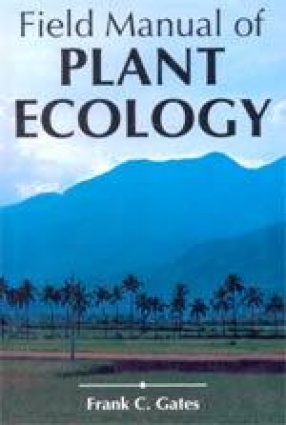Field Manual of Plant Ecology
Synopsis
Having taught plant ecology at the university of Michigan Biological Station during the past thirty-two summers, the Author has acceded to repeated requests for a manual based on this course. The course was initiated and developed in line with Agassiz's famous maxim: "Study nature, not books," in addition to which special effort was made to use as little and as simple apparatus as possible. The aim was to work with plants at all times. Both high-school and college students can use the manual with suitable modification in any part of the country. In using this or any other manual the teacher must study over the habitats at his disposal and select certain ones for classwork together with the methods best fitted for that particular area. He should then "Cruise" over the area of become absolutely familiar with the plant and endeavor to be ready to cope with any situation that may arise. Sometimes specific directions for an area will need to be made in addition for an area will need to be made in addition to the general directions in this manual. Later in the course, areas new to the teacher as well as to the students may be studied. In setting up the field course in plant ecology in a new areas, effort should first be directed toward obtaining as detailed maps as possible. If such are not available, the teacher should made some preliminary maps himself to use until better ones can be obtained. At least one class exercise many be expected to result in a detailed map of small part of the region. If the teacher is familiar with the ground control, aerial photographs are a great help in locating streams, lakes, roads, and trails but have to be carefully checked in determining vegetation. With or without maps, the teacher must explore the area to discover and evaluate likely places for classwork. He should make necessary transportation arrangements, determine what and how much general and special equipment will be needed, and make direction sheets. The latter should call attention to location and special features; include questions to direct attention and study; contain lists of species, references, and special pointers regarding write-up; and state the time at which the report is to be handed in. In an area of many possibilities of the work may take account of particular needs to certain students. In the field, the teacher will introduce the area by pointing out its salient features, giving as much of the history as is known or pertinent; select or assign the work of the students, individually or in groups; be as available as possible to all for answering questions, checking directions, etc., and to lead a get-together in the area as soon as the field work is finished for more questioning and to summarize the data. The student, on the other hand, should lean the time, the place, and the equipment necessary for the trip; go over the advance assignment, if there is one; get the direction sheet or the assignment for his group; complete the work in the field, recording the data in the form most suitable for incorporation in the data assemblage, make such drawings, sketches, or collections as are necessary; obtain any special directions for writing up the exercise; and hand in the report within the set time limit.
Read more
18.90
17.01
$
21.00 $
Free delivery Wolrdwidе in 10-18 days
Ships in 1-2 days from New Delhi
Membership for 1 Year $35.00
Get it now and save 10%
Get it now and save 10%
BECOME A MEMBER







Bibliographic information